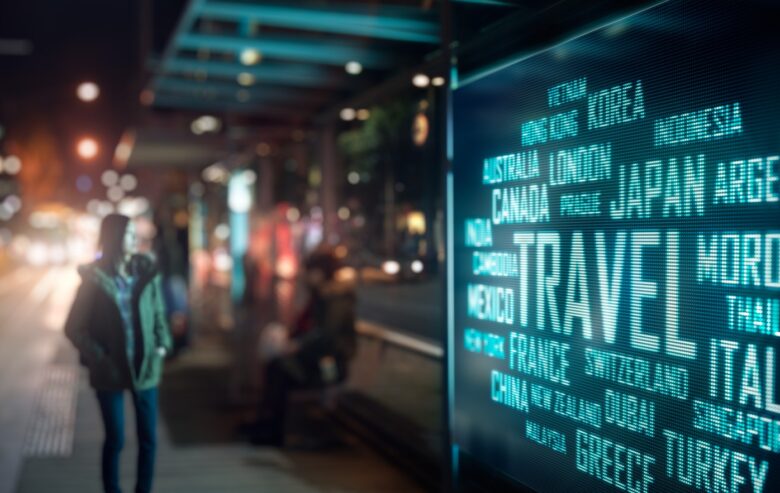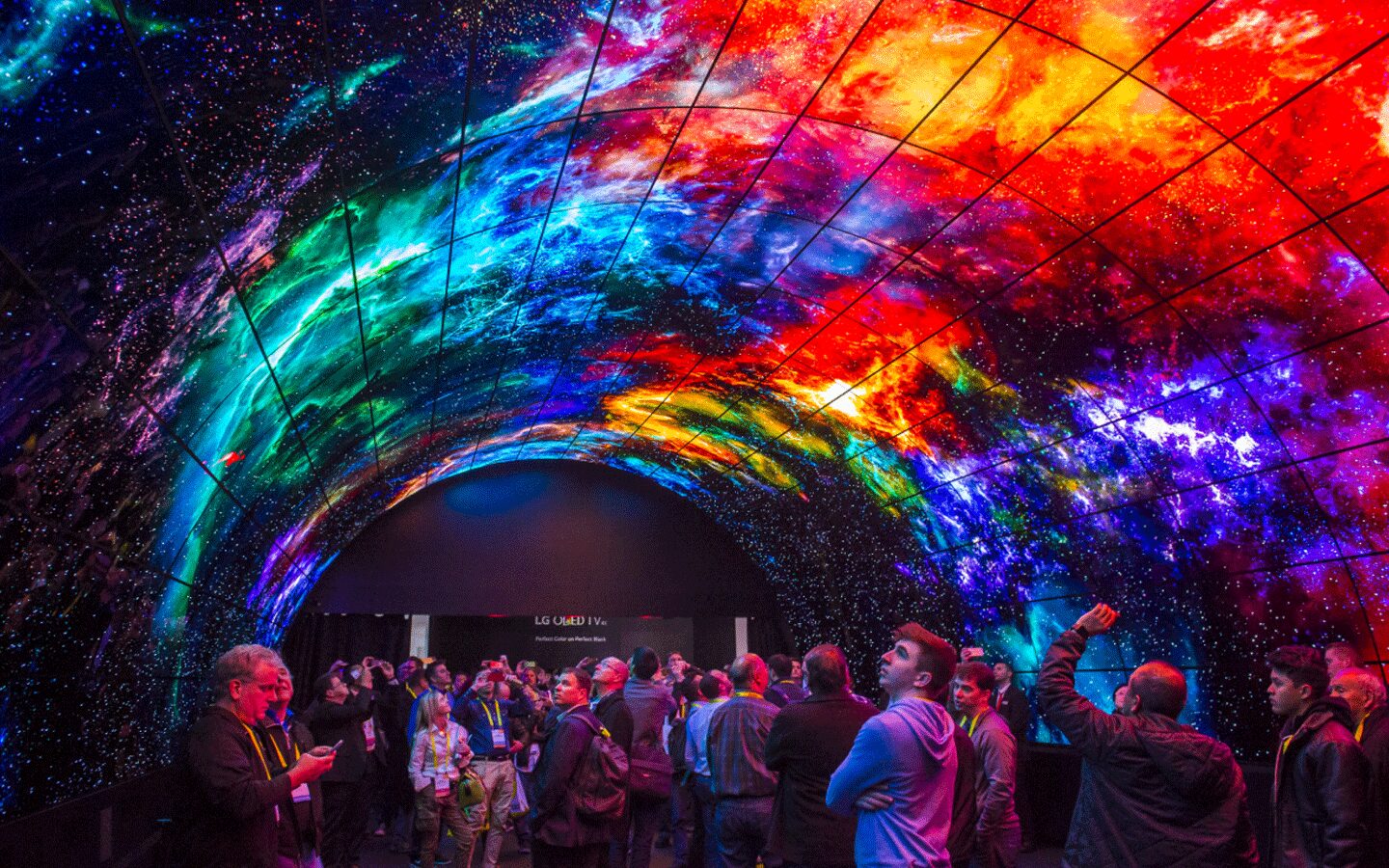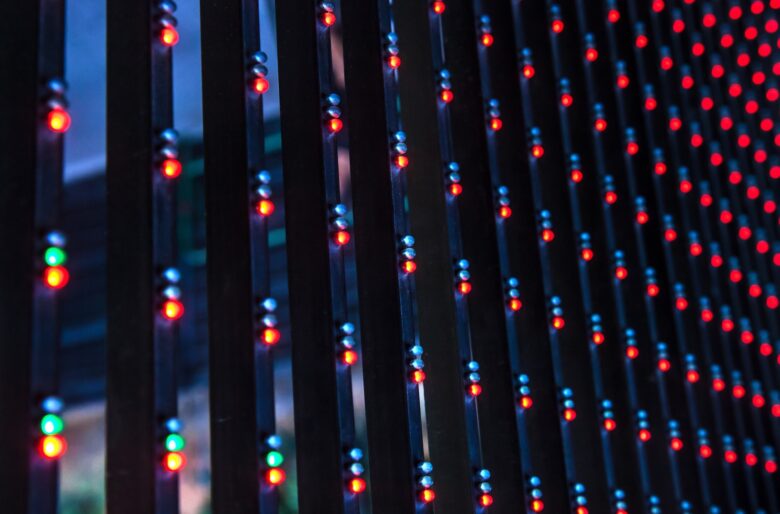Have you ever seen a display that lit up the room in ways you never thought possible? That’s the power of LED display technology. From conference rooms to tradeshow floors, LED displays have become an indispensable tool to make any space more engaging and appealing.
In this article, we’ll explore some of the incredible potentials of LED display technology. We’ll discover new ways to use them for video walls, interactive kiosks, and contextual content.
Contents
What Is LED Display Technology?
LED display technology is a modern innovation in digital signage, allowing businesses and organizations to show off their content vibrantly and engagingly. With LED displays, users can be sure they are getting the most out of their digital displays, as these displays can produce sharper images with higher brightness levels than traditional LCD screens.
In addition to providing better visual performance, LED displays are more energy efficient than most other types of display technology. LED displays can consume less energy by using fewer power-hungry components while still producing bright visuals.

Source: canva.com
Benefits of LED Display Technology
When it comes to LED display technology, you might need to learn its many advantages over other types of display technology, which is why it’s an excellent option for your business.
Brightness
One of the top benefits of LED display technology is that it emits exceptionally bright light, thanks to how light-emitting diodes are arranged in a circuit. This means you can have an incredibly bright screen, and your viewers won’t have any trouble seeing what’s on it, no matter what time of day or how far away they may be.
Low Power Usage and Long Lifespan
LED displays use significantly less power than alternative technologies, as each diode consumes much less than other lighting sources. That means a lower power bill and that your display can last for years compared to alternative technologies. The longer lifespan can save you significant money in replacement costs over time.
Colour Accuracy and Quality
Another standout benefit of LED displays is how realistic and accurate the colours appear, which makes them perfect for displaying photos and videos with incredible accuracy. Thanks to their superior colour accuracy, images portrayed on LED displays have more vibrant hues. They are incredibly lifelike—allowing your audience to feel fully immersed in whatever content you show them.

Source: canva.com
Understanding the Brightness Requirements for LED Displays
The brightness of an LED display is one of its essential elements. An LED display can be easier to see and read from a distance with the proper brightness.
If you need to become more familiar with LED displays, the first step to understanding their potential is how brightness is measured. Brightness is measured in nits, the light output from a single pixel or light source. The higher the nits rating, the brighter it will appear.
Brightness also depends on several factors, including:
- Viewing angle: When looking at an LED display from different angles, its brightness will change depending on how much light is lost by its surface at various angles.
- Colour temperature: This helps determine how cool or warm an LED display will appear when viewed up close. More excellent colours usually appear brighter and more vibrant than warmer colours.
- Contrast ratio: This measures the ratio between the brightest white and darkest black on a screen and affects how vivid an image appears when viewed from any angle. A higher contrast ratio means images appear more vivid and vibrant even when viewed from a wide angle.
Advantages of LED Displays Over Other Display Technologies
Did you know that LED displays have significant advantages over other display technologies? Sure, they may cost a bit more upfront, but they compensate for it with features no other display technology can match. Here are just some of the significant benefits of LED displays:

Source: itslgroup.com
High Brightness
LED displays are incredibly bright and can be seen in even the brightest light environments. This makes them ideal outdoors, where you may get a lot of sunlight during the day. This also means you don’t need to worry about glare from external light sources—LEDs are so bright that they will overpower any external light sources.
Long Lasting
LEDs last much longer than other display technologies—up to 100,000 hours! That’s an impressive ten-year operation with no maintenance or replacement required. And when you add in their energy-saving capabilities, it makes them an even better investment.
Versatility
Another great thing about LED displays is their versatility—they can be adapted to fit almost any shape or size, making them ideal for complex spaces and corners that other display technologies might not be able to fit into. Plus, they come in different brightness levels to suit different applications and environments.
Low Power Consumption
LEDs only require little power, making them an attractive choice for projects where energy efficiency is essential. LEDs consume significantly less than other display technologies like CRT or LCD monitors/screens, causing lower electricity costs over time.

Source: canva.com
Applications of LED Display Technology
LED technology might be the answer if you’re looking for a versatile and energy-efficient display solution. LEDs (or light-emitting diodes) are luminous bodies used in various display applications and situations. Let’s take a look at some of the uses of LED displays.
First, LEDs can be used for advertising or signage purposes. They are versatile and ideal for digital billboards, shop windows, and external building facades. LEDs also have an incredibly long lifespan and require low maintenance. So they are an excellent investment even in high-traffic areas.
Second, LED displays can also create immersive video walls that add depth and realism to video content. They are bright enough to be used in outdoor settings or large auditoriums without losing quality. Additionally, they offer great clarity thanks to the high resolutions offered on modern LEDs.
Finally, LED displays also offer an interactive experience that can help engage audiences when needed most for example, spectaculars in shopping malls or during significant events—where interactive kiosks allow users to interact directly with content on the big screen.
Conclusion
With LED display technology, the possibilities are virtually limitless. From its energy-efficient design to almost unlimited customization options, LED displays offer scalability, interactivity, and visibility that can’t be matched. With the proper implementation, it can be used as an effective tool for driving engagement and providing an immersive digital experience.
